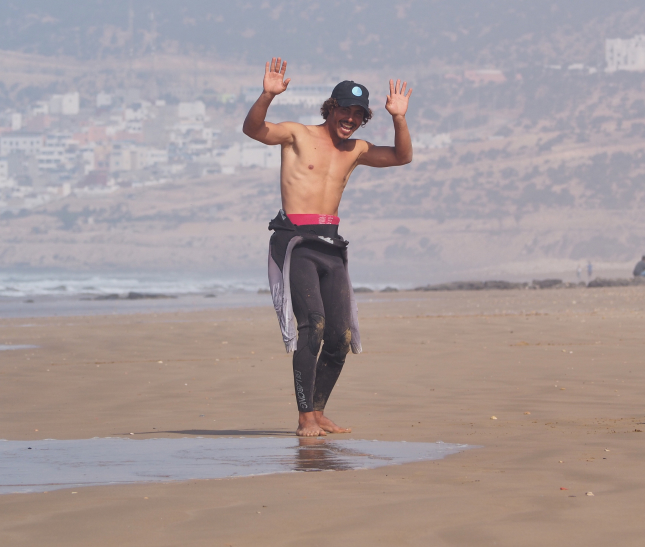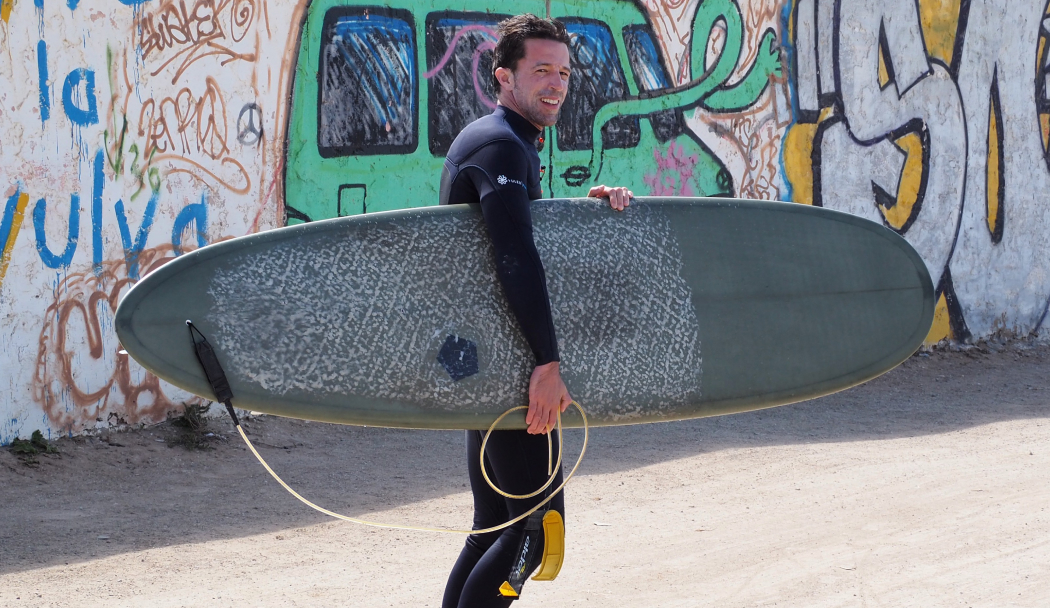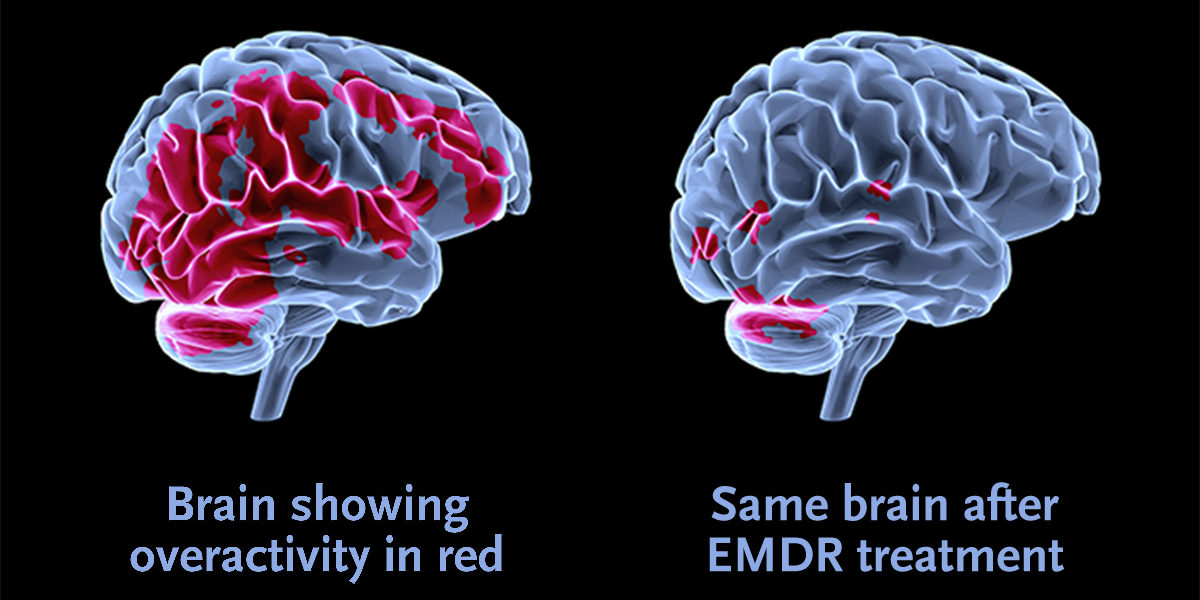


Our key research question was to investigate whether there were significant differences in anxiety, depression and changes in outlook following trauma between pre-retreat and post-retreat.

The therapeutic effects of surfing are becoming increasingly evident in psychological research. Recent studies have started to document how surfing can lead to improvements in post-traumatic stress disorder, anxiety and depression (ref. 1).
There are various reasons why surfing might have such a positive impact on mental health. The most obvious being participating in physical activity, but other important factors might be engaging in a group activity and experiencing flow states.
Flow is the optimal state of total absorption in the current task you are doing; be it running, surfing or playing an instrument. Everything else disappears and you are completely in the zone (ref. 2). Resurface therapy retreats are based on integrating flow through surfing into trauma treatment, as well as encouraging interoception and engaging in experiential group therapy.
Evidence-based practice is fundamental to our ethos at Resurface, therefore we recruited an independent researcher to carry out an analysis of a recent retreat in Morocco. This intervention study was conducted to investigate whether taking part in a Resurface retreat is associated with improvements in mental health.
In this study we measured anxiety, depression and change in outlook following trauma at baseline (pre-retreat) and post-retreat.
Baseline scores were taken on the first day before treatment began, and post-retreat scores were taken on the last day before departure.
Ten participants took part with an average age of 41 (range: 22-56 years). The retreat consisted of 5 treatment days with one day off in the middle.

Focusing on interoception with yoga therapist
Lecture/workshop hosted by lead clinician on trauma recovery




Anxiety was measured using the standardised Generalised Anxiety Disorder (GAD-7) questionnaire, which is highly reliable and commonly used in NHS practice in the UK3.
A paired sampled t test showed a statistically significant improvement in anxiety from baseline to post-retreat (p=.038), whereby the mean score was reduced from 10.9 (SD= 3.5) before treatment to 7.7 (SD= 4.6) post treatment (see Figure 1).

Depression was measured using the PHQ-9, a standardised measure commonly used in clinical practise alongside the GAD-7.
Here, a significant reduction was also found in mean depression score (p=.001). The average score before the retreat was 14.56 (SD= 5.4), and this dropped to 7.44 (SD= 5.7) following the retreat (see Figure 2). According to the PHQ-9 guidelines (ref 4), this depression score lowered from the high end of the moderately severe depression category to the lower end of moderate depression category.

The Change in Outlook Questionnaire (CiOQ) is a common measure in post-traumatic growth research (ref 5). This questionnaire measures positive and negative change in outlook following trauma, where a higher score indicates higher positive change. An increased score over time is suggested to be reflective of post-traumatic growth.
The analysis showed a statistically significant increase in change in outlook score (p=.046), indicating significant post-traumatic growth from baseline to post-retreat (see Figure 3). The mean scores increased from 101.5 (SD= 18.6) to 110.4 (SD= 18.9).

The research findings detailed above suggest that attending the Resurface retreat was associated with improved anxiety, depression and change in outlook following trauma. However, some caution must be taken when interpreting the findings. Firstly, the structure of the Resurface retreat only accommodates for 10 individuals in order to provide a holistic treatment programme for the participants. In terms of research, this is a very small sample and lacks statistical power, therefore strong claims cannot be made based on the findings.
Secondly, there appears to be a lot of variation in the scores in that some of the standard deviations are high. This could be dependent upon the fact that there was high variability in the causes and severity of post-traumatic stress in the participants. Given that this retreat is open to all individuals who have experienced trauma, regardless of the nature of their experience, it is not possible to control for the high level of individual differences in the research.
Finally, the post-retreat measure was taken immediately after the programme was completed, and therefore the reductions in feelings of anxiety and depression, for example, may be inflated. In order to examine this issue, participants will be contacted at 3 and 6-month follow up to assess whether the effects evidenced here were sustained over time. Another point to note is that while the measures used in this study are reliable and have been validated in previous research, there are limitations to the depth of data that can be retrieved from questionnaires. Moreover, participants may not respond as conscientiously as if the researcher had asked the questions in an interview. This will be addressed in the next study by implementing both qualitative and quantitative measures.
Download PDFTCTSY Explained
Trauma Center Trauma-Sensitive Yoga (TCTSY) is an evidence-based clinical treatment for complex trauma and PTSD. The TCTSY program was the first yoga program in the world to be so thoroughly backed and validated by research that it has been included in the National Registry of Evidence-based Programs and Practices database published by the US government. The program has foundations in Trauma Theory, Attachment Theory, and Neuroscience, as well as the central components of the Hatha style of yoga.
Trauma, The Body, and Yoga
Experiencing trauma can affect the brain and the body in many different ways. Research shows that a traumatic event can overwhelm our nervous system and alter the way we process and recall memories. While talking and traditional therapy has proven beneficial, it sometimes does not fully help a person heal from the effects of trauma. In addition to the memory of the event, trauma also affects the unconscious parts of the brain and the body and cause a person to keep interpreting the world as dangerous.
Taking place within the context of relationships and overwhelming adversity, complex trauma causes a person to experience disempowerment and disconnection from their body and other people. Together, the five core elements of TCTSY(interoception, invitational language, non-coercion, choice-making and shared authentic experience) offer the opportunity for the participant to encounter a new experience. Through exploring the physical forms and movements of Hatha yoga with the emphasis on the participant’s internal experience rather than the yoga forms, and within a safe as possible space the participant begins to discover self-empowerment, agency and connection.
This can be a huge benefit to a client’s parallel psychotherapeutic process, allowing them greater control over their emotional landscape and enabling them to feel safer and feel more regulated when exploring their trauma.
Clients who choose to participate in TCTSY sessions are required to also be participating in individual psychotherapy with a different mental health provider.
What To Expect At A Session
During a session, a TCTSY Facilitator will provide you with options for physical movements and at the same time demonstrate the five core elements of TCTSY.
The Facilitator will be practicing the yoga movements and noticing what is happening within their own body, while simultaneously remaining engaged with the participant/s who is having their own unique practice. Physical assists do not take place in TCTSY. Facilitators practice non-attachment to outcomes in TCTSY because for recovery to take place, the power must remain with the participant.

Abstract
Up to this point, there have been few studies mentioning the link between EMDR and post- traumatic growth (PTG). One of the main discoveries of this study is that the concept of PTG is not well understood and that there is limited recognition of its quantitative measures. There was some understanding of the potential links between an EMDR process and the facilitation of PTG, yet this was little formulised or congruent in its delivery. Using Interpretative Phenomenological Analysis (IPA), this project attempted to investigate the connection in greater detail. Four EMDR Consultants were enlisted to participate. Five major themes materialised during the data analysis: EMDR is a powerful and efficacious intervention, PTG is more than just symptom relief, EMDR can have a part to play in promoting PTG, the re- evaluation phase is a key component in recognising and identifying PTG, and the need for more research is crucial for further understanding. In line with the IPA method, all of the themes are accentuated via the capture of, and analysis of, comprehensive accounts of the research participant’s lived experiences. Results showed the need for a better understanding of PTG and the necessity of further research.
You can download a copy below:
Download PDF